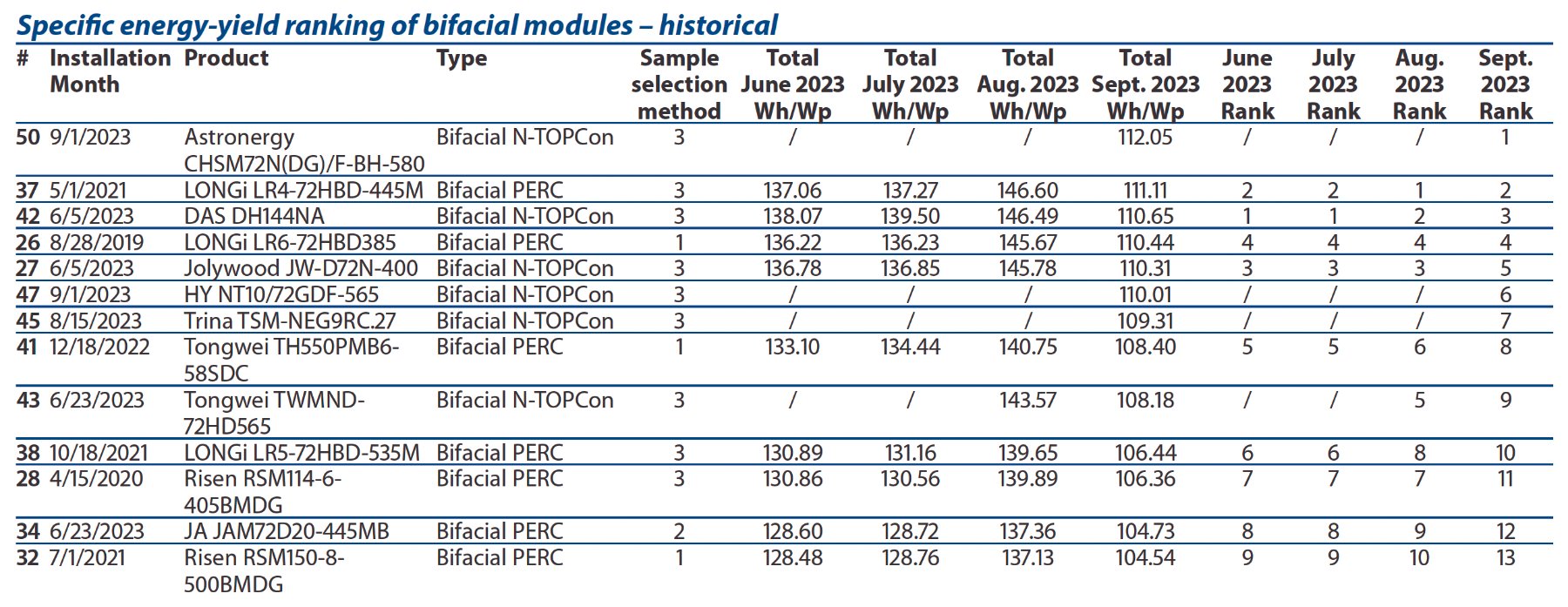pv magazine test: September 2023 Results
By George Touloupas
This article was originally published in pv magazine – November 2023 edition. Learn more about the pv magazine test here.
George Touloupas, senior director of technology and quality for Clean Energy Associates (CEA), analyzes the September 2023 energy-yield results from the outdoor testing field in Xi’an, China.
New bifacial tunnel oxide passivated contact (TOPCon) products from Astronergy, HY Solar, Trina Solar and a back contact product from Aiko were installed in the outdoor test field on Sept. 1. We removed this day from the results, so that these modules can be ranked together. A back contact product from Longi and an HJT product from Risen are going through indoor testing and we expect to add them to the outdoor test installation shortly.
We observed that the energy yield figures of several top-performing products are very close, and this may render the numbered ranking method we have been using less meaningful. CEA is working on a new ranking system that will adapt to these new trends and be more representative of the product performance.
The average bifacial boost is 9.16% for September 2023. Bifacial boost is defined as the relative advantage of the average specific energy yield of all bifacial products compared to the average specific energy yield of all mono-facial mono PERC products. As more TOPCon bifacial products have been installed recently we decided to begin reporting the bifacial boost figures for PERC and TOPCon solar separately, in addition to the overall bifacial boost.
Table 1: Bifacial boost - June to September 2023
Table 2: Specific energy-yield ranking of bifacial modules - June to September 2023
Table 3: Specific energy-yield ranking of monofacial modules - June to September 2023
Figure 1: Daily temperature and irradiance data - September 2023
Figure 3: Relative yield of different technologies - September 2023
Notes on the energy yield measurements:
The energy yield comparison among various technologies, including bifacial boost, will be analyzed using products installed after the beginning of 2019.
The energy yield is given in Wh/Wp and calculated by dividing the energy produced by the module by the Pmax at STC of the module. This Pmax is the maximum STC power after a process of stabilization.
The results are grouped in categories, per module type.
The bifacial boost depends on many parameters: the bifaciality factor, the installation geometry, the albedo of the ground, and the sun angle and diffuse irradiance. The ground in this case is gray gravel.
Test Cooperation
pv magazine test is a cooperative effort involving pv magazine, APsystems, CEA, and Gsolar. All testing procedures are carried out at Gsolar’s test laboratory in Xi’an, China. CEA supervises these tests and designed both the indoor and outdoor testing procedures.





























